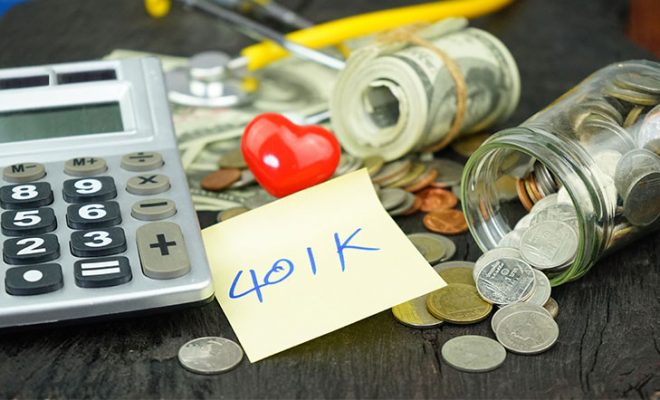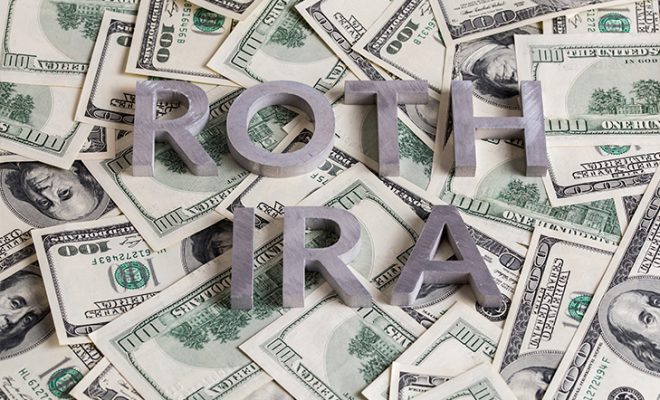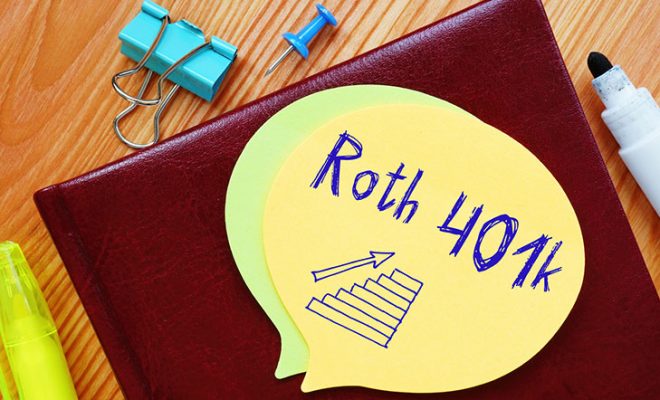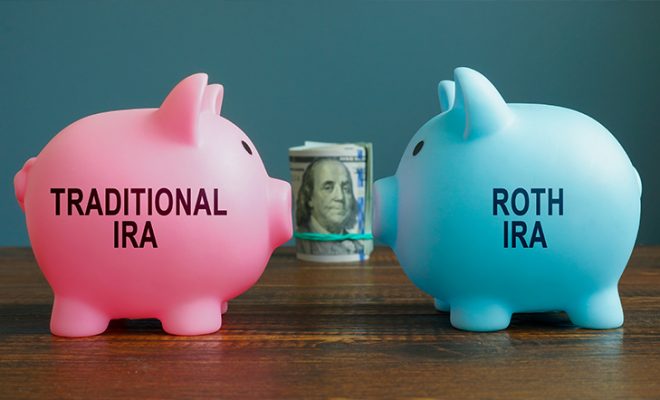How to Invest Your 401(k) in Stocks

A 401(k) is vital for your retirement plan. Investing in a 401(k) is one of the most popular ways U.S. workers save up for their retirement. The tax advantages, automated contributions, and ease of investment make it a particularly financially valuable instrument. Moreover, if you start investing in a 401(k) from an early age, chances are you will be a millionaire by the time you retire, provided you maximize your contributions and invest your 401(k) funds wisely. Contributing to a 401(k) account is one step; the other crucial step is to invest your money prudently to maximize gains.
Generally, 401(k) plans offer a range of investments, but a single plan might not offer them altogether. The final choice of investments depends on your employer. Most employers give you an option to invest in mutual funds – stocks, bonds, target-date funds, stable value funds, etc. However, while opting for these investments is relatively easy, your options are highly restricted. This implies that you miss out on the opportunity to grow your funds tax-free. For instance, if you are a high-risk investor but you only have options to invest in a 401(k) that offers mutual funds rather than individual stocks investments or ETFs (Exchange Traded Funds), you are losing out on the opportunity to grow your tax-free wealth.
Limited investment options have always been a major drawback of the 401(k)-retirement savings plan. However, most people do not think of alternatives because they do not have a clear idea of how a 401(k) fund works. As per a recent survey, only 37% of Americans can define what a 401(k) is. And according to a recent poll from ValuePenguin, only a third of Americans fully understand how their 401(k) account works.
A method to overcome the limited investment option drawback is by opting for a Self-Directed Brokerage Account (SDBA) or a 401(k) brokerage window. This alternative account offers a wide choice of investment inside your 401(k), giving you an option to invest as per your risk appetite and not be limited by the available securities as selected by the employer. So, if you are an aggressive investor and can afford to take higher risks, then you have an option to choose more aggressive fund choices. As per Aon Hewitt, as many as 40% of the current 401(k) plans offer an SDBA. Despite the COVID-19 pandemic, the balance in these accounts continued to rise in 2020, contributing to a 9% increase year over year.
However, if you do not know how to invest your 401(k) in stocks, you are not alone. As per the Aon Hewitt survey findings, only 3% to 4% of the retirement participants that have access to the SDBA use the option. But if you aim to make full use of your 401(k) plan, you should understand how an SDBA works and see if it fits your purpose.
Here is everything you should know about how to invest your 401(k) in stocks:
Can you invest 401(k) in stocks?
401(k) plans came into effect in the 1980s after the virtual disappearance of the defined pension benefits. Over the years, these plans became a primary retirement savings vehicle for most retirees in the U.S. However, since their inception, 401(k) plans have offered only a limited palette of investment options to the employees. Some employers also offer more investment choices to ensure optimal diversification of 401(k) plans to oblige the rules and regulations of the Employee Retirement Income Security Act (ERISA). But most plans fall short. Many employees do not have information about these additional choices, and others do not opt for them because of a lack of input. Hence, an average retiree ends up within a limited menu offered by the employer.
But if you want to follow a different path and invest 401(k) in stocks, you can do that through an SDBA. Some employers have started offering self-directed brokerage accounts to employees in response to the increasing demand for wider investment options.
What is a self-directed brokerage account?
A self-directed brokerage account (SDBA), also known as a 401(k)-brokerage window, allows you to invest 401(k) in stocks. These accounts are held by the plan administrator, but all the investment choices and decisions are made by you. An SDBA serves as an alternative to the traditional mutual fund investments offered by the employer through your 401(k).
An SDBA allows you to treat your traditional 401(k) account like a typical brokerage account with access to a wide-ranging assortment of investment options. These plans allow you to invest in publicly traded securities, which are otherwise not on the menu of a general 401(k) plan. However, it is your responsibility to ensure that you invest as per your risk tolerance, financial situation, retirement goals, and time horizon. A self-directed brokerage account gives you interesting investment opportunities but only with a heightened risk of investing. You could access a greater menu of mutual funds or invest in individual stocks, bonds, ETFs, and others. Apart from this, you also get access to professional money management, allowing you to grow your funds through expert guidance. By investing in lucrative options outside the 401(k) core choices, you can aim to maximize your returns by choosing securities best suited as per your goals and risk preference.
How does a self-directed brokerage account work?
By giving you access to an SDBA through your 401(k), your employer allows you to move your assets, tax-and penalty-free, into a brokerage account with a large selection of investment choices. However, your funds remain in the retirement plan and are not rolled over. Moreover, you continue to enjoy the same tax advantages as a traditional 401(k) account.
Even though investing via SDBA is tactical, you can maximize your returns and get professional guidance for money management if you are an avid investor. A self-brokerage account allows you to invest without emotional bias and enables you to make rational decisions based on professional advice. You can also hire a financial advisor to provide you with complete guidance on how to best use an SDBA and select the right assets to achieve your investment goals.
What rules govern an SDBA?
SDBAs follow the same rules and requirements as an ordinary 401(k) plan. It is good to know and understand the different IRS (Internal Revenue Service) rules governing SDBAs.
- Annual contribution limits: Similar to a 401(k), an SDBA allows you to only invest up to $19,500 for 2021 from your taxable income. The limit is revised each year as per the current rate of inflation. However, if you are 50 years or older, you can make use of ‘catch-up’ contributions of up to $6,500 in 2021. Further, like a 401(k), your employer can also make matching contributions to your SDBA up to a maximum of $58,000 in 2021. But this must be within the defined contribution limits. If you exceed the upper cap, it is best to inform your plan administrator and get the excess contribution back before the tax deadline of the following year. However, if you do not get the additional sum back, you could end up paying a tax penalty on the excess sum withdrawn. This implies that you would pay taxes twice on the same sum.
- Disqualified investments: Even though an SDBA can be used to invest in stocks and other securities, some employers may restrict investment options in an SDBA too. For instance, your employer might allow you to invest through an SDBA but limit your options to a wider variety of mutual funds than a 401(k). But many employers allow investments in real estate, gold, currency, stocks, bonds, ETFs, etc. Further, your 401(k) rules apply to SDBA investments too. This means that while your employer gives you the freedom to invest in a wide array of securities, you cannot use them to receive an immediate benefit. For instance, you cannot use earnings from your 401(k) plan to buy a home, take a vacation, buy a car, etc. You also cannot pay yourself or a professional financial advisor from your 401(k) balance for managing the SDBA account. Additionally, you cannot use your 401(k) to benefit your family members – parents, children, or grandparents. You cannot lend your 401(k) money to relatives or let them use the real estate property owned by the 401(k) account.
- Withdrawals: The withdrawal rules for a traditional 401(k) and an SDBA are the same. If you take any drawings before the age of 59.5, the IRS will levy a 10% penalty along with applicable income taxes on the sum withdrawn unless you meet an exception such as a hardship withdrawal. Pandemic-related distributions are not available for 2021. If you quit your job, you have an option to roll over your SDBA to another qualified retirement account or an IRA (Individual Retirement Account), as you deem fit. This move is not taxable, provided the new account is another tax-advantaged account.
What are the potential benefits if you invest 401(k) in stocks or other securities through self-brokerage accounts?
Here are some of the top reasons why you can consider investing 401(k) in stocks through self-brokerage accounts:
- Greater flexibility: An SDBA gives you access to a wider range of investment choices over the ones offered by your standard 401(k) plan. So, if you prefer having a large investment array in your retirement plan, a self-directed brokerage account can be a good fit for your purpose. This account can provide you with access to thousands of mutual funds. For instance, if there are over 900 mutual funds, a standard 401(k) plan only offers 1% of the choices. Some self-brokerage accounts give you a more flexible brokerage window and freedom to invest beyond mutual funds in ETFs, individual stocks, bonds, etc. The objective is to benefit a hands-on investor.
- Admittance to a broader assortment of assets: Most 401(k) plans that offer SDBA facilities allow you to allocate a portion of your total retirement funds to the SDBA. This works best for you if you want to take advantage of the core line-up of your standard 401(k) plan but also desire access to additional asset classes such as emerging markets, alternative asset options like real estate, commodities, etc. You can also consider investing in international small-cap stocks. Additionally, you can take advantage of low-cost investment funds through your SDBA. However, you should check the fee disclosures of your traditional 401(k) investment options. And, if you are unsatisfied with the above-average fees and expenses of these funds compared to their performance, investing via the SDBA medium can be a preferable choice.
- Active investment: If you want to trade actively and consider yourself an avid investor, you will benefit more from investing via the SDBA mode. In an SDBA, you can trade without worrying about the immediate tax liability, short-term and long-term capital gains, wash sale rules, etc. Further, you also have an option to seek professional investment advice, allowing your retirement plan to accumulate a large corpus by tapping the benefits of expert guidance.
What are the potential drawbacks if you invest 401(k) in stocks or other securities through self-brokerage accounts?
SDBA offers several critical advantages. But, these accounts also have their drawbacks. Here are some of the disadvantages you should know about investing through SDBA:
- Requires disciplined investing: SDBA accounts are best suited for investors who have a strong understanding of market dynamics, can research extensively, and devote time to manage their investments. Additional choices lead to higher risk and added responsibilities. You will need to be on top of asset allocation, contribution rates, asset location, costs, fees, etc. Hence, if you are not an advanced investor or someone who can keep out the emotional aspect of investing, you should consider not opting for an SDBA.
- Higher risk: One of the most criticized drawbacks of the SDBA medium is the risk they expose you to. If you are operating your SDBA investments without professional guidance, you risk mismanaging your 401(k) assets by investing too heavily in stocks or related riskier assets. There is also a risk of emotional investing or panic-based investment decisions. Further, you may trade too often, which generally does not align with the wiser investment approach of long-term buy-and-hold investing. A wide choice of investments in an SDBA exposes you to much greater risk.
- Involve additional costs sometimes: The annual maintenance fees for mutual funds invested through an SDBA can be higher than the ones offered through a standard 401(k) plan. Hence, you should check all fees disclosures of the SDBA and general 401(k) plan before making your investment choice.
- Not available for everyone: As mentioned, only 40% of the employers offer the SDBA option to their employees. This means that more than half of the retirement plan sponsors are not offering the SDBA facility to their employees. Hence, you might not be offered this account as your employer might limit the facilities. Moreover, even if you have the SDBA provision, the employer might restrict the securities available in the SDBA plan.
Is the SDBA right for you?
If you are the type of investor who constantly keeps track of the market and has better knowledge and time for portfolio management, you can opt for an SDBA 401(k). Moreover, if you desire more flexibility in investment and a wider assortment of investment securities, you can choose the SDBA. However, you must be careful to exercise caution due to the risk that comes along with wider access to investment securities.
To conclude
The self-directed brokerage accounts will become significantly popular over the coming years because of the growing acceptance of active trading and the increasing risk appetite of investors. If you want to take advantage of the benefits of the SDBA but do not wish to or have the time for active management of your investment portfolio, consider engaging with a professional financial advisor. Vanguard reported that professional advice could potentially add 3% or more value to an average portfolio value. When compounded over time, 3% can make a huge difference to your retirement financial security. A professional financial advisor has expertise on the limitations of a SDBA and other retirement accounts.
To further understand how you can use your 401(k) to achieve your investment goals, visit Dash Investments or email me directly at dash@dashinvestments.com.
About Dash Investments
Dash Investments is privately owned by Jonathan Dash and is an independent investment advisory firm, managing private client accounts for individuals and families across America. As a Registered Investment Advisor (RIA) firm with the SEC, they are fiduciaries who put clients’ interests ahead of everything else.
Dash Investments offers a full range of investment advisory and financial services, which are tailored to each client’s unique needs providing institutional-caliber money management services that are based upon a solid, proven research approach. In addition, each client receives comprehensive financial planning to ensure they are moving toward their financial goals.
CEO & Chief Investment Officer Jonathan Dash has been profiled by The Wall Street Journal, Barron’s, and CNBC as a leader in the investment industry with a track record of creating value for his firm’s clients.










